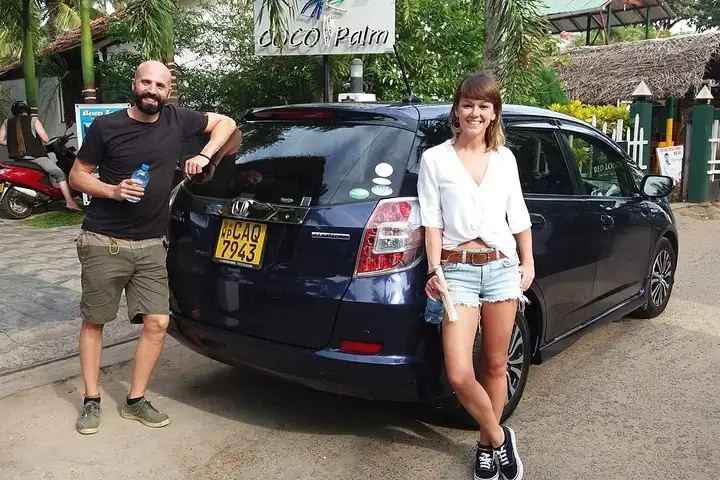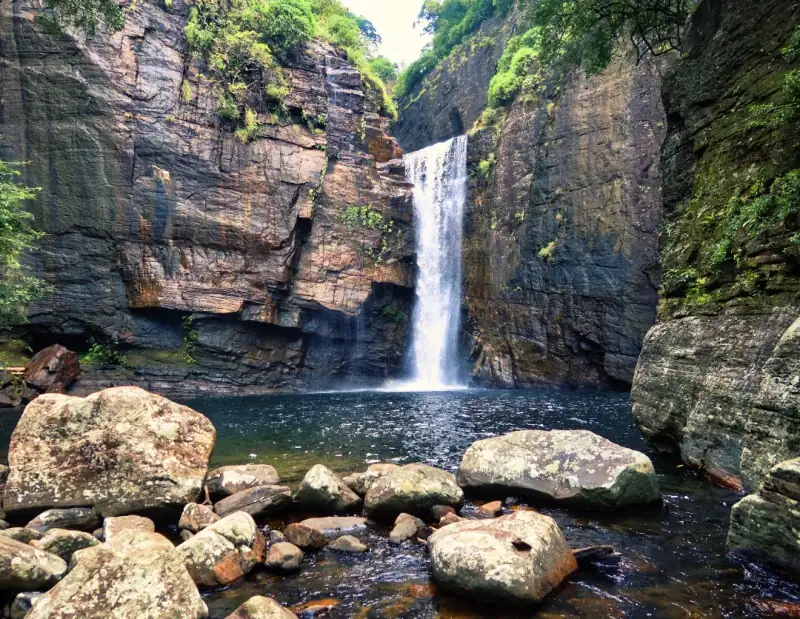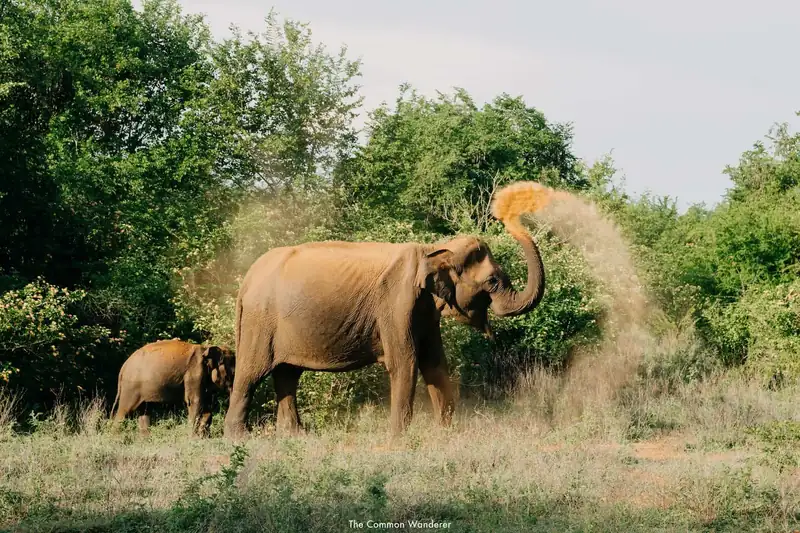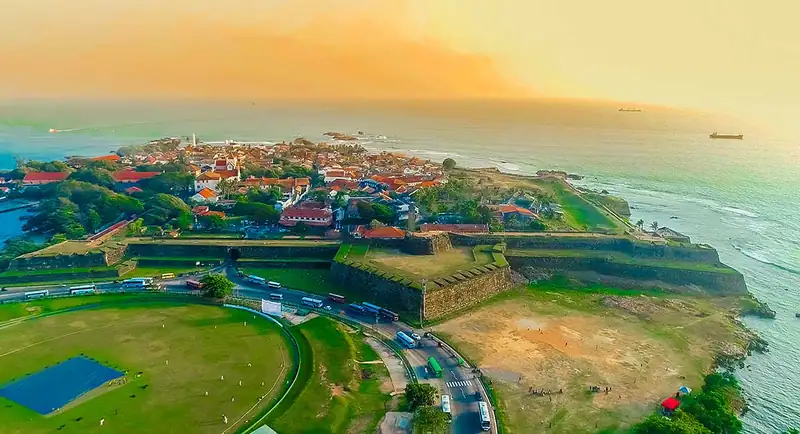Imagine exploring a land where ancient temples, lush tea plantations, and pristine beaches come together to create a traveler’s paradise. Sri Lanka, often referred to as the “Pearl of the Indian Ocean,” offers a rich world of experiences that can captivate anyone in just two weeks. Whether you’re an adventure seeker, a history buff, or someone who simply loves to unwind by the sea, this island nation has something for everyone.
In this carefully crafted 2-week itinerary, you’ll journey through bustling cities, serene countryside, and coastal havens. From the cultural heart of Kandy to the stunning vistas of Ella and the sun-kissed shores of Mirissa, each destination promises unforgettable memories. So pack your bags and get ready to begin on an adventure that will leave you longing for more.
Key Takeaways
- Rich Cultural Experiences: Sri Lanka offers a blend of ancient temples, historical sites, and vibrant cities, with notable attractions including Sigiriya Rock Fortress, Temple of the Sacred Tooth Relic, and Galle Fort.
- Scenic Landscapes and Natural Beauty: The country boasts stunning landscapes from the lush tea plantations in Nuwara Eliya to the coastal regions of Mirissa and the scenic train routes like Kandy to Ella.
- Diverse Transportation Options: Efficient travel within Sri Lanka can be achieved through an extensive network of public and private buses, scenic train rides, and the convenience of hiring private drivers for a more personalized experience.
- Variety of Accommodations: Whether you prefer budget-friendly hostels or luxurious resorts, each destination from Colombo to Galle offers diverse lodging options suitable for all types of travelers.
- Practical Travel Tips: Ensure a smooth trip by familiarizing yourself with visa requirements, respecting local cultural norms, using local currency wisely, and packing suitable clothing and essentials for Sri Lanka’s tropical climate.
- Dining Highlights: Savor Sri Lankan cuisine with dining hotspots in various cities, featuring everything from street food to renowned eateries like Ministry of Crab in Colombo and Cafe Chill in Ella.
How to Travel Around Sri Lanka
Exploring Sri Lanka efficiently is key to maximizing your 2-week adventure. Understanding the various transportation options will help you choose the best ways to get around this vibrant country.
Buses
Sri Lanka has an extensive bus network connecting most parts. This is one of the cheapest ways to travel, with public and private services available.
- Public Buses: Run by the Sri Lanka Transport Board, these buses are very economical but often crowded and less comfortable.
- Private Buses: Companies like Avro and Ceylon Tours offer slightly more comfort and reliability compared to public buses.
Trains
The train network in Sri Lanka is another favorite mode of transportation, especially for scenic journeys.
- Scenic Routes: The train rides from Kandy to Ella or Nuwara Eliya are renowned for their stunning views.
- Comfort: Trains tend to be more comfortable than buses, providing a more relaxed travel experience through the lush hill country.
Private Drivers

Hiring a private driver is a convenient way to explore Sri Lanka, especially if you prefer a personalized and flexible travel experience.
- Flexibility: You can tailor your itinerary to visit off-the-beaten-path locations and hidden gems.
- Comfort: Enjoy the comfort of air-conditioned vehicles and the convenience of door-to-door service.
- Local Knowledge: Drivers often double as local guides, offering insights into the country’s culture and attractions.
Equip yourself with this knowledge to decide how you’ll traverse Sri Lanka, making your journey as enjoyable and efficient as possible.
2 Weeks in Sri Lanka Itinerary
Begin on a two-week adventure in Sri Lanka, an island nation teeming with vibrant culture, stunning landscapes, and rich history. Whether you’re an adventure seeker, history enthusiast, or beach lover, this itinerary has something for everyone.
Day 1: Arrive in Colombo
Upon arrival in Colombo, take time to relax and acclimate. Explore the city’s colonial architecture, visit the National Museum, or stroll along Galle Face Green to soak in the local atmosphere.
Day 2: Explore Colombo
Spend the day visiting Colombo’s attractions like Independence Square, Viharamahadevi Park, and the bustling Pettah Market. Don’t miss the Gangarama Temple and indulge in the city’s culinary delights at local eateries.
Day 3: Transfer to Sigiriya
Travel to Sigiriya, about a 4-5 hour drive from Colombo. Check into your accommodation and savor the local cuisine. In the evening, explore the charming town and its serene surroundings.
Day 4: Visit Sigiriya Rock and Polonnaruwa
Start early to visit Sigiriya Rock, a UNESCO World Heritage Site known for its ancient frescoes and breathtaking views. In the afternoon, head to Polonnaruwa to explore the ruins of this medieval capital, featuring grand stupas, statues, and temples.
Day 5: Travel to Kandy
Drive to Kandy, a journey of about 2.5 hours. Upon arrival, visit the Temple of the Sacred Tooth Relic and explore the city’s lakeside setting. Enjoy a cultural show in the evening.
Day 6: Explore Kandy
Spend the day visiting the Royal Botanical Gardens, Kandy Lake, and the bustling local markets. Don’t miss the vibrant Peradeniya Market for some shopping and local delicacies.
Day 7: Train Ride to Nuwara Eliya
Board the scenic train from Kandy to Nuwara Eliya, a journey known for its stunning landscapes. Arrive in Nuwara Eliya, often called “Little England,” and relax in its cool climate.
Day 8: Tea Plantations in Nuwara Eliya
Visit the tea plantations and factories to learn about Sri Lanka’s world-famous tea industry. Experience a guided tour and enjoy a tea-tasting session. Explore Gregory Lake and Victoria Park in the afternoon.
Day 9: Journey to Ella
Drive to Ella, a small town famed for its scenic beauty and laid-back vibe. Check into your accommodations and take a leisurely walk through the town.
Day 10: Hiking and Waterfalls in Ella

Hike to Ella Rock or Little Adam’s Peak for panoramic views. Visit the Ravana Falls and cool off in its refreshing waters. Don’t forget to cross the Nine Arches Bridge, an iconic landmark in Ella.
Day 11: Safari at Udawalawe National Park

Head to Udawalawe National Park for a safari adventure. Spot elephants, leopards, and diverse bird species. Visit the Elephant Transit Home to see baby elephants being cared for.
Day 12: Relax in Mirissa
Travel to Mirissa, a coastal town known for its beautiful beaches. Spend the day relaxing, swimming, and perhaps embarking on a whale-watching tour.
Day 13: Explore Galle Fort

Drive to Galle and explore the historic Galle Fort. Wander through its quaint streets, visit boutique shops, and enjoy the colonial architecture. Don’t miss the Galle Lighthouse and Maritime Museum.
Day 14: Return to Colombo and Departure
Return to Colombo via a scenic coastal route. Use any remaining time to do some last-minute shopping or explore more of the city before your departure.
Top Attractions
- Sigiriya Rock Fortress
- Temple of the Sacred Tooth Relic in Kandy
- Galle Fort
- National Museum of Colombo
- Royal Botanical Gardens in Kandy
Hidden Gems
- Pettah Market, Colombo
- Nine Arches Bridge, Ella
- Gregory Lake, Nuwara Eliya
- Viharamahadevi Park, Colombo
- Elephant Transit Home, Udawalawe
Accommodations
| Location | Budget | Mid-Range | Luxury |
|---|---|---|---|
| Colombo | Hostel by Bed | OZO Colombo | Cinnamon Grand |
| Sigiriya | Sigiri Hostel | Gimanhala Hotel | Water Garden |
| Kandy | Kandy City Hostel | Nature Walk Resort | Earl’s Regency |
| Nuwara Eliya | The Trevene | Hotel Glendower | Heritance Tea Factory |
| Ella | Ella Hostel | Ella Mount Heaven | 98 Acres Resort |
| Mirissa | Hangover Hostels | Peacock Villa | Casa Mirissa |
| Galle | Galle Hostel | Fortaleza | Amangalla |
Dining Highlights
- Colombo: Ministry of Crab, The Gallery Café
- Kandy: The Empire Café, Kandyan King’s Dine
- Nuwara Eliya: Grand Indian, The Hill Club
- Ella: Café Chill, 360 Ella
- Mirissa: Zephyr Restaurant, Mama’s
- Galle: Poonie’s Kitchen, Fortaleza
Transportation & Practical Tips
- Buses: Economical, widespread network
- Trains: Scenic routes, especially Kandy to Ella
- Private drivers: Flexible, comfortable, insightful
- Tuk-tuks: Convenient for short distances
- Best time to visit: December to March for west/south coasts, May to September for east coast
- Sustainability tips: Choose eco-friendly accommodations, reduce plastic use, respect wildlife
- Budget considerations: Travel off-peak season for lower prices, use public transport to save costs
Conclusion
Ready to immerse yourself in Sri Lanka’s diverse offerings? Pack your bags, follow this guide, and begin on an unforgettable journey. Let adventure, history, and relaxation fill your two-week Sri Lankan itinerary.
Where to Stay in Sri Lanka
With Sri Lanka’s rich cultural heritage, stunning landscapes, and vibrant cities, finding the perfect place to stay can enhance your travel experience. Whether you’re seeking luxury or budget accommodations, each location offers unique options.
Colombo
Colombo is your gateway to Sri Lanka. This bustling capital city offers an array of modern amenities combined with colonial charm.
- Accommodation: Jetwing Colombo Seven is a prime choice. This hotel features a rooftop pool, comfortable rooms, and central location.
- Activities: Discover colonial buildings, visit the National Museum, and stroll along Galle Face Green.
- Dining Highlights: Colombo offers diverse dining from local street food to fine dining at places like Ministry of Crab.
- Practical Tips: Stay in central locations like Fort or Colombo 07 for easy access to major attractions.
Sigiriya
Sigiriya, known for its iconic rock fortress, is a must-visit location.
- Accommodation: Stay in nearby towns like Habarana or Dambulla. Aliya Resort & Spa in Sigiriya provides luxury amidst nature.
- Activities: Explore Sigiriya Rock and Pidurangala Rock. Visit Kaudulla National Park for a safari.
- Dining Highlights: Enjoy local Sri Lankan cuisine at Ahinsa Restaurant in Sigiriya.
- Practical Tips: Book early to secure the best deals, especially during peak seasons.
Kandy
Kandy, the cultural heart of Sri Lanka, offers a serene setting and deep historical significance.
- Accommodation: The Kandy House provides boutique, colonial-style lodging. Budget travelers can consider Charlton Kandy Rest.
- Activities: Visit the Temple of the Tooth, Royal Botanical Gardens, and Peradeniya.
- Dining Highlights: Try Balaji Dosai for authentic vegetarian food.
- Practical Tips: Opt for accommodations near the lake for picturesque views.
Nuwara Eliya
Nuwara Eliya, known as “Little England,” is famous for its cool climate and rolling tea plantations.
- Accommodation: Choose Grand Hotel for its historic charm or Single Tree Hotel for budget-friendly comfort.
- Activities: Tour a tea plantation, visit Gregory Lake, and hike at Horton Plains National Park.
- Dining Highlights: Savor local and international dishes at The Hill Club.
- Practical Tips: Pack warm clothing as the temperatures can be chilly.
Ella
Ella is a backpacker’s haven with breathtaking views and adventure activities.
- Accommodation: Stay at 98 Acres Resort & Spa for luxury or The Chillout Ella for a budget-friendly option.
- Activities: Hike to Ella Rock, visit Nine Arches Bridge, and explore Ravana Falls.
- Dining Highlights: Enjoy a meal at Cafe Chill, a popular spot among travelers.
- Practical Tips: Book accommodations with a view of Ella Gap for a memorable stay.
Mirissa
Mirissa is ideal for beach lovers and those looking to relax by the sea.
- Accommodation: Mandara Resort offers beachfront luxury, while Hangover Hostels caters to budget travelers.
- Activities: Go whale watching, relax on the beach, and visit Parrot Rock.
- Dining Highlights: Feast on seafood at Zephyr Restaurant & Bar.
- Practical Tips: Stay close to the main beach for convenience.
Galle
Galle, with its historic Dutch Fort, blends history with coastal beauty.
- Accommodation: The Fort Printers offers boutique stays within the fort, and Pedlar’s Inn Hostel is great for budget travelers.
- Activities: Explore Galle Fort, visit Unawatuna Beach, and shop local markets.
- Dining Highlights: Dine at A Minute by Tuk Tuk for a unique experience.
- Practical Tips: Accommodation within the fort can enhance your historical experience.
| Location | Luxury Option | Budget Option |
|---|---|---|
| Colombo | Jetwing Colombo Seven | City Hotel |
| Sigiriya | Aliya Resort & Spa | Sigiri Thilanka Rest |
| Kandy | The Kandy House | Charlton Kandy Rest |
| Nuwara Eliya | Grand Hotel | Single Tree Hotel |
| Ella | 98 Acres Resort & Spa | The Chillout Ella |
| Mirissa | Mandara Resort | Hangover Hostels |
| Galle | The Fort Printers | Pedlar’s Inn Hostel |
Use this guide to plan your stays and ensure you have the best experiences in Sri Lanka’s diverse destinations.
Practical Travel Tips for Sri Lanka
Visas and Entry Requirements
You’re required to obtain an Electronic Travel Authorization (ETA) before arriving in Sri Lanka. Apply online through the official government website. This ETA allows for a 30-day stay with double entry. Make sure your passport is valid for at least six months from your entry date to avoid any travel hiccups.
Currency and Money Tips
The local currency is the Sri Lankan Rupee (LKR). You can exchange currency at airports, banks, or exchange offices. While credit cards are widely accepted in cities and tourist spots, rural areas often prefer cash. ATMs are available, but keep in mind there might be fees and withdrawal limits. It’s always wise to have some LKR handy for local markets and small establishments.
Health and Safety
Vaccinations are recommended. Ensure you’re up to date on routine vaccines and consider Hepatitis A, Typhoid, and Yellow Fever shots. Carry a basic first-aid kit with common medications. Tap water isn’t safe to drink; stick to bottled or purified water. Road safety can be a concern, so if you’re renting a vehicle or using public transport, stay alert and cautious.
Cultural Considerations
Sri Lanka’s rich culture deserves respect. Dress modestly, especially when visiting religious sites—cover your shoulders and knees. Remove shoes and hats before entering temples. Photography can be sensitive; always ask for permission, particularly at religious sites and in rural communities. Public displays of affection are frowned upon, so keep it discreet. Understanding these cultural norms will enhance your travel experience and ensure you leave a positive impression.
What to Pack for Sri Lanka
Packing for a 2-week adventure in Sri Lanka requires careful planning due to the diverse climate, cultural norms, and activities you’ll experience. Use the following guide to ensure you’re fully prepared for your trip.
Clothing
- Light and Breathable Clothing: Loose-fitting cotton clothes are your best bet for Sri Lanka’s tropical climate. These will keep you cool whether you’re exploring bustling markets in Colombo or lounging on the beaches of Mirissa.
- Modest Clothing: Sri Lanka is a conservative country, particularly around temples and cultural sites. Pack items that cover your shoulders and knees. This is especially important for temple visits in places like Kandy and Anuradhapura.
- Comfortable Shoes: Good walking shoes or hiking boots are essential. You’ll need them for exploring ancient sites like Sigiriya, hiking in Ella, and going on safari in Udawalawe National Park.
- Warm Layers: If your itinerary includes the highlands, such as Nuwara Eliya, bring light warm clothing. It can get quite cool in the evenings, even though the generally warm climate of the island.
- Sun Protection: Sunscreen, sunglasses, and a hat are vital. The sun in Sri Lanka can be intense, especially on the southern and eastern coasts. Protecting your skin will help you enjoy your outdoor activities without any discomfort.
- Insect Repellent: Mosquitoes and other insects are common, particularly in rural areas and around water bodies. Ensure you pack a strong insect repellent to prevent bites, especially when visiting places like Yala National Park.
Prepare wisely and you’ll be ready to fully embrace all that Sri Lanka has to offer, from its lush hills to its sacred sites and stunning beaches.
Conclusion
Embarking on a 2-week journey through Sri Lanka promises a rich world of experiences. From the bustling streets of Colombo to the serene landscapes of Ella and the historic charm of Galle, every stop offers something unique. Whether you’re an adventurer, a history buff, or someone seeking relaxation, Sri Lanka’s diverse offerings ensure you’ll create unforgettable memories.
With practical tips on transportation, accommodation, and cultural norms, you’re well-prepared to navigate this beautiful island. Pack wisely, respect local customs, and get ready to immerse yourself in Sri Lanka’s vibrant culture and breathtaking scenery. Your adventure awaits!
Frequently Asked Questions
Is it safe to travel to Sri Lanka right now?
Sri Lanka is generally considered safe for travelers, but it’s always best to check current travel advisories and local news before planning your trip. Exercise standard precautions and be mindful of any special guidance issued by your country’s travel authorities.
What is the best time to visit Sri Lanka?
The best time to visit Sri Lanka depends on your preferred destinations. For southern and western coasts, December to March is ideal. If visiting the eastern coast, April to September is best. The central highlands are good to visit year-round.
How can I obtain a visa for Sri Lanka?
Travelers can obtain an Electronic Travel Authorization (ETA) online for a 30-day stay in Sri Lanka. Visit the official ETA website, fill out the required information, and pay the fee. This visa can also be extended once inside the country.
What currency is used in Sri Lanka, and can I use credit cards?
The currency used in Sri Lanka is the Sri Lankan Rupee (LKR). Credit cards are widely accepted in hotels, restaurants, and larger stores, but it’s advisable to carry cash for local markets and smaller establishments.
What should I pack for a trip to Sri Lanka?
Pack light and breathable clothing, modest attire for temple visits, comfortable shoes, warm layers for highland areas, sun protection, and insect repellent. Adapting to the diverse climate and respecting cultural norms will help you enjoy your trip fully.
How can I get around Sri Lanka?
Travelers can use the extensive bus network, scenic train routes, or hire a private driver for a personalized experience. Each option offers a different way to explore the country’s beautiful landscapes and cultural sites efficiently.
Are vaccinations required for traveling to Sri Lanka?
There are no mandatory vaccinations for entering Sri Lanka, but it’s recommended to stay updated on routine vaccines. Consult with a travel health specialist for advice on additional vaccinations, such as Hepatitis A and Typhoid.
What are some must-visit destinations on a two-week itinerary in Sri Lanka?
A comprehensive two-week itinerary in Sri Lanka should include Colombo, Sigiriya, Kandy, Nuwara Eliya, Ella, Mirissa, and Galle. These locations offer a mix of cultural experiences, natural beauty, outdoor adventures, and beach relaxation.
What type of accommodations can I find in Sri Lanka?
Sri Lanka offers a range of accommodations to suit all budgets, from luxury resorts like Jetwing Colombo Seven in Colombo to budget-friendly options like guesthouses. Each destination has a variety of lodging choices, ensuring comfort during your stay.
Is Sri Lanka expensive for travelers?
Sri Lanka is relatively affordable compared to many other travel destinations. While luxury accommodations and dining are available, budget-conscious travelers can find economical options for lodging, food, and transportation, making it accessible for all types of tourists.
